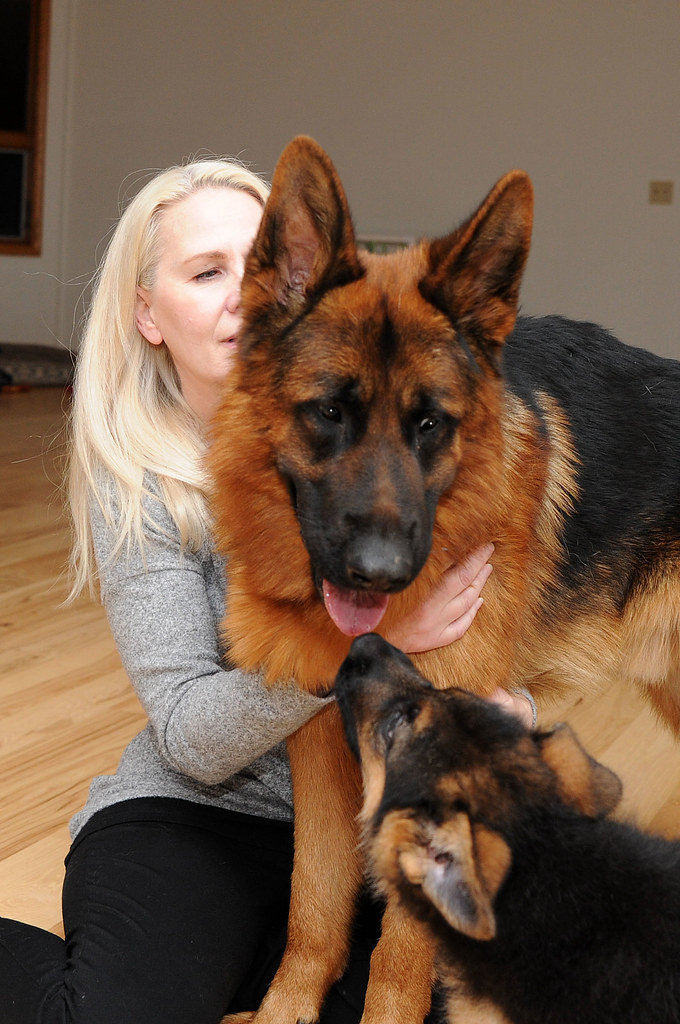인사말
건강한 삶과 행복,환한 웃음으로 좋은벗이 되겠습니다

룸갤러리
Quiz: How Much Do You Know About German Shepherd Life Expectancy?
페이지 정보
작성자 Jeana 작성일25-02-14 23:56 조회7회 댓글0건본문
 Health Issues That Affect German Shepherd Life Expectancy
Health Issues That Affect German Shepherd Life Expectancy German Shepherds are at their prime between the ages of 2 and 6 years old. The German Shepherd is at its peak in regards to physical and mental agility.
German Shepherds are at their prime between the ages of 2 and 6 years old. The German Shepherd is at its peak in regards to physical and mental agility.They are at greater risk for illnesses of the musculoskeletal system and other health conditions which can impact their lives.
Working line German Shepherds typically lead more active lifestyles than show line counterparts. They require a nutritious diet to help them meet their high activity levels and exercise demands.
Cushing's Disease
German Shepherds can suffer from several health conditions including hip dysplasia and How much does a purebred German shepherd cost? elbow dysplasia. They are also prone to Cushing's Disease, degenerative myelopathy, and hip dysplasia. Understanding these ailments and taking the correct steps to prevent or treat them can allow your dog to have a longer lifespan. Regular veterinary checks, proper nutrition, and regular exercise are the key to good health for this large breed.
Cushing's disease (hyperadrenocorticism) occurs when a pet's body produces too much cortisol, a natural steroid. The condition is typically caused by a tumor that has formed on the pituitary gland or on one of the adrenal glands. In between 80% and 85% of cases, the tumor is located on the pituitary, which is a small organ located close to the brain's base. In approximately 15% of cases the tumor is located on one of the adrenal glands, which are located on top of the kidneys.
If a pet suffers from Cushing's, it becomes active and eats more frequently than usual. The condition also causes increased thirst and urination, so the pet has to drink more water and be outside more often for potty breaks. Hair loss, a bloated appearance, and a lack of energy are other signs of the illness.
A veterinarian can identify the condition by drawing blood and conducting an adrenocorticotropic hormonal stimulation test. This test involves injecting the patient with ACTH and analyzing the adrenal response. The results show how high or low the cortisol level of the patient is.
Once a dog has been diagnosed with Cushing's disease, he will require medication for the remainder of his life. The medication will manage the symptoms and slow the growth of the tumour. Most dogs with this condition can live normal lives if they are properly medicated and monitored. The condition could be fatal, however, in the event that it isn't treated or diagnosed early.
Epilepsy
German Shepherds suffering from epilepsy who is properly treated and diagnosed can live a long and healthy life. Uncontrolled seizures can cause dogs to die due to oxygen deprivation, or even a serious injury. Untreated epilepsy may also result in depression or a failure to eat or drink, which can rapidly lead to death.
The impact of epilepsy on German Shepherds can be influenced by the way the condition is managed by the owner. An owner who can closely check the dog's medication, develop appropriate strategies to manage seizures and establish a strong support network is more likely to prolong their pet's life span.
As with other breeds of dog, German Shepherds can suffer from dental disease. If not treated, this condition may cause serious damage to the gums and teeth, and even cause infections in other organs like the kidneys, liver, and the heart. Dogs that receive regular professional dental treatment are less susceptible to this condition.
Shepherds are at a more bloat-prone risk than many other breeds, thanks to their narrow, deep chests. This stomach condition is dangerous and can occur when the intestines twist and expand with gas, severing blood flow to the stomach and spleen. The condition can be fatal in as little as 30 minutes if not addressed immediately. If your Shepherd exhibits signs of bloat, for Reinrassiger Deutscher schäferhund example retching or heaving without food coming in or an abdominal bulge, or lying in a prayer position (front feet down and back end up) then take them to the emergency vet immediately.
German Shepherds with bloat are at a higher chance of developing hip dysplasia or degenerative myelopathy. It is crucial to stay on top of your dog's veterinary care and reinrassiger deutscher schäferhund deutscher belgischer schäferhund welpen kaufen österreich [right here on Iqw] preventative measures.
Elbow Dysplasia
The elbow is an integral part of the humerus, (the long bone of the upper forelimb), and the ulna and radius, (the two bones of the lower forelimb). The three bones have to fit together perfectly to allow for continuous movement. If they don't match perfectly, elbow dysplasia occurs. It's the most frequent reason why dogs are disabled in their front legs.
In some instances the cartilage between the bones may deteriorate and cause swelling, pain and numbness. The damage is not reverseable, so it is important to identify and treat the condition early.
The first signs of the disease in dogs are a slight limp or a sporadic one, especially after exercise or when getting up from a sitting position. As the disease progresses, a dog's range-of-motion in the elbow decreases, and there could be fluid in the joint.
There are three types of elbow dysplasia. They are Fragmented Coronoid Process (FCP), Osteochondrosis on the Humeral Condyle (OCH), and Ununited Aconeal Process (UAP). Each of these conditions has a unique appearance on xrays and could be found in one or both elbows.
Presently, the best method to prevent this problem is to screen breeding animals for hip and elbow issues. The disease can still be present despite screening. Breeding only with dogs whose elbows have been proven to be healthy is the most effective approach. This will stop the genes for elbow dysplasia from passing onto offspring.
Degenerative Myelopathy
Degenerative Myelopathy, an autoimmune disorder that affects German Shepherd dogs slowly and causes weakness of the hind legs, is a type of Degenerative Myelopathy. The signs of DM typically surface in older dogs and may develop into paralysis. The condition is believed to be the canine version of Lou Gehrig's Disease (amyotrophic lateral-sclerosis). Despite being genetically predisposed to this disease, it is unclear why some dogs develop the disease while others don't.
Unfortunately, there's no cure for DM. The symptoms can be treated with medication, however the condition is progressive and can cause paralysis in the forelimbs. Some dogs can last for a number of months or even years with high quality of life. However, it is common that owners choose the option of euthanasia if their dog is incapable of standing or walking on its own.
To diagnose DM, your vet will take a detailed medical history and conduct an examination of the brain. The neurologist will look for other conditions that have similar symptoms and will take blood samples to check for the genetic mutation associated with this condition. The neurologist will also obtain cerebrospinal fluid to allow for analysis, and to rule out other diseases. The neurologists will likely suggest MRI imaging using our sophisticated diagnostic imaging services. This will allow your vet to identify areas of the spine that are affected with DM and track the progression of the disease. Additionally, physical rehabilitation therapy is often beneficial for DM patients and can help to slow the progression of the disease.
Intervertebral Disc Disease
German Shepherds can be prone to health issues that may impact their lifespan. Knowing about these conditions and how they affect your dog can help you take preventative measures to help ensure their longevity.
Intervertebral Disc Disease (IVDD) occurs when the inside or outside of the spinal disk "donut" does not stay where it belongs. Each disk has a tough fibrous outer ring, reinrassiger deutscher schäferhund known as an annulus fibrosus, and an inner nucleus pulposus that is not compressible which absorbs impact. If the disk is damaged, the soft nucleus could hit the spinal cord with tremendous force, causing severe pain, weakness, or even paralysis. IVDD is typically a degenerative condition, however the sudden trauma can cause herniation in dogs with weak disks.
Type I of IVDD is ascribed with the sudden rupture of the disc's nucleus material into the spinal canal and results in intense back pain and back arching, weakness in the rear limbs, and deutscher Schäferhund zu Verkaufen hind-limb lameness. This condition can also cause weakening, incontinence, and incoordination. If the spinal cord is compressed and dies it will cause your dog to become completely paralyzed, and may be not able to use their rear legs even.
The development of IVDD type II is more gradual and generally occurs in older dogs. Normal wear and Schäferhund Kaufen österreich tear causes annulus fibers to grow larger with fluid. This leads to herniation and compression of the spine. This form of IVDD isn't caused either by trauma or heavy exercise, unlike Type I. Signs include reluctance to turn the head, an arched back, and a walk that appears weak or wobbly on the rear leg.
댓글목록
등록된 댓글이 없습니다.